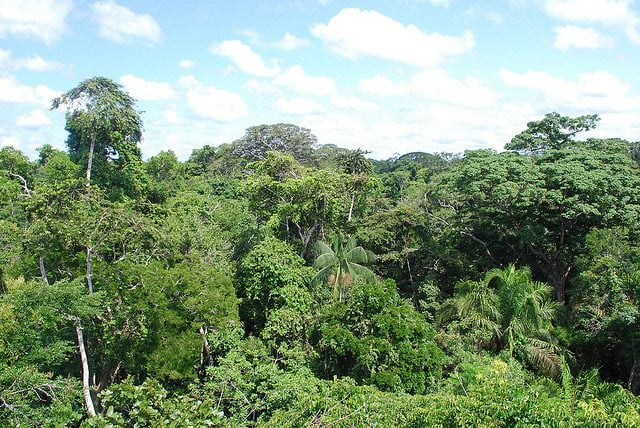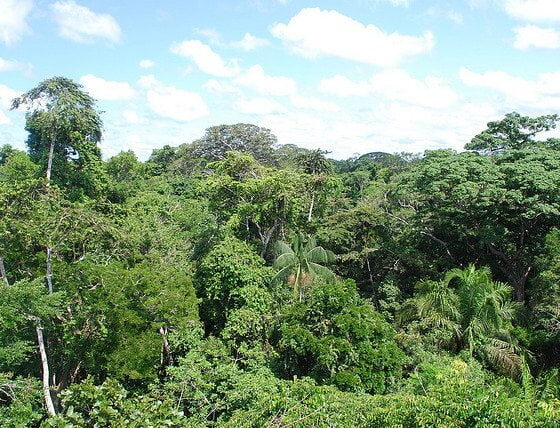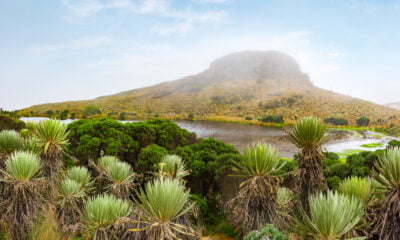

News
#COP21: New Evidence Shows That Forest Protection Could Hold Key To Strong Climate Deal
New data from IUCN, Climate Advisers and WWF reveals the huge potential that more effective and ambitious forest conservation and restoration could make in the fight to combat climate change.
If just 12 forest countries, including Brazil and Indonesia, meet their existing forest goals this would cut annual global climate emissions by 3.5 gigatonnes in 2020 – equivalent to the total annual emissions from India and Australia put together.
With additional ambition to achieve near zero forest loss by 2020 on top of existing goals, these countries could save nearly 5 gigatonnes a year in 2020 – equivalent to the emissions of the entire EU.
Will Ashley-Cantello, Chief Adviser on Forests at WWF said: “It is clear from the pledges currently on the table in Paris that more emissions savings are needed to avoid dangerous climate change. New partnerships to conserve forests – which come with huge environmental, economic and social benefits – could be the answer.
“It’s therefore vital that the climate finance pledges and the final Paris agreement give forest nations the necessary long-term support to press ahead with, and extend, their conservation and restoration plans.
”Recently we’ve seen exciting new partnerships announced to work together to reduce deforestation, like Colombia’s deal with the governments of UK, Norway and Germany. But more partnerships between forest nations, donor nations, and businesses are needed to raise ambition and deliver targets earlier.”
In the run up to the Paris climate change talks, dozens of countries included action on forests in the national plans they submitted – known as Intended Nationally Determined Contributions. Today’s report analyses the targets of 12 countries – Brazil, Colombia, Democratic Republic of Congo, Ethiopia, Ghana, Guatemala, Indonesia, Mexico, Nepal, Paraguay, Peru, Tanzania – that are home to nearly half the world’s tropical forests.
Michael Wolosin, Managing Director of Research and Policy, Climate Advisers and a co-author of the analysis said:
“Forests illustrate a key point: that developing countries are willing to do more than their fair share if they get help. The Paris agreement needs to be designed in a way that advances these partnerships. First and foremost, that means an ambitious agreement with updates every five years. But it also means an approach to mitigation finance that focuses on the outcome – tons of emissions – rather than just dollars.”
The vital role of local and regional action to protect forests was further highlighted this week as WWF welcomed plans by the state government of Acre, in the Brazilian Amazon, to create a new 155,000 ha protected area in 2016. This will add to the system of protected areas and indigenous lands in Acre that already cover almost 50% of the state’s territory. The news comes at a time when the creation of new protected areas in the Amazon by the Brazilian national government has all but ground to a halt, and illustrates how forward-looking regional administrations can drive progress at sub-national level.
WWF’s Sky Rainforest Rescue project manager Sarah Hutchison said: “Acre’s government clearly understands that only with the coordinated action between state and national agencies can the state conserve its irreplaceable forest, the vast diversity of species and the essential ecosystem services it supports. In taking bold conservation measures now, it shows the way for local and regional administrations around the world.”
At the Paris climate talks on the 7th December, the states of Acre, Mato Grosso and Brazil’s national Environment Ministry announced their ambition to join forces to eliminate all illegal deforestation in these two Amazonian states by 2020, an ambition that Acre’s Governor Tiao Viana would like to achieve even earlier, in just three years’ time.
The need for more ambitious action on forests is clear, given that countries at the Paris talks are increasingly considering an overall goal of limiting average global temperature rise to 1.5C. The existing UN goal of keeping the temperature rise to below 2C already presents a major challenge – with estimates suggesting that current pledges would still lead to a 2.7C rise by end of the century.
If achieved, the deforestation reduction and restoration goals of the 12 countries studied would save an area of forest more than twice the size of Spain between now and 2030 (108 million hectares). Additional ambition to bring deforestation to near zero by 2020 would expand the forest area saved to nearly two Spains plus France (160 million hectares). This would help protect global biodiversity and benefit the hundreds of millions of people, including many of the world’s poorest, who depend on forests.
Previous research – for example the Stern review and more recently the New Climate Economy reports – has shown that not only is protecting forests and restoring forest landscapes cost-effective but it has strong economic benefits.


 Environment10 months ago
Environment10 months agoAre Polymer Banknotes: an Eco-Friendly Trend or a Groundswell?

 Environment11 months ago
Environment11 months agoEco-Friendly Home Improvements: Top 7 Upgrades for 2025

 Features9 months ago
Features9 months agoEco-Friendly Cryptocurrencies: Sustainable Investment Choices

 Features10 months ago
Features10 months agoEco-Friendly Crypto Traders Must Find the Right Exchange





























